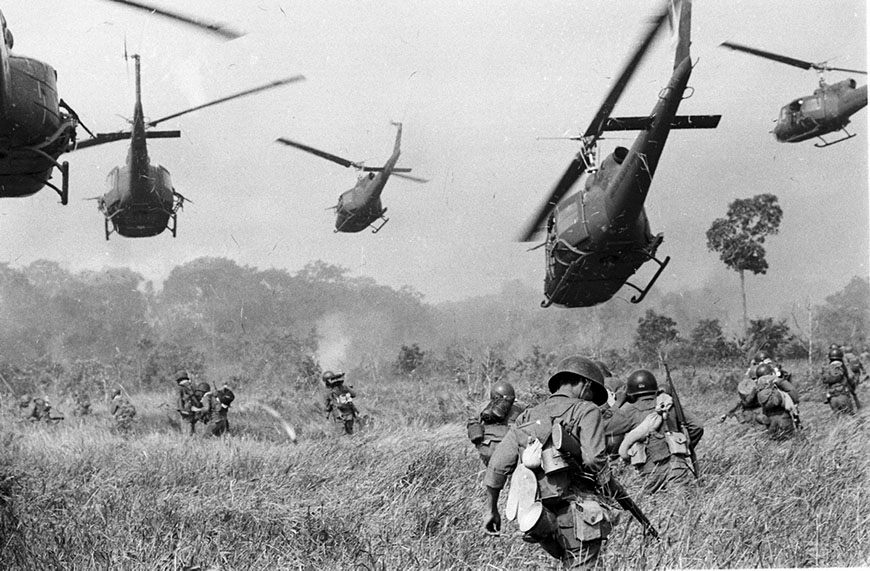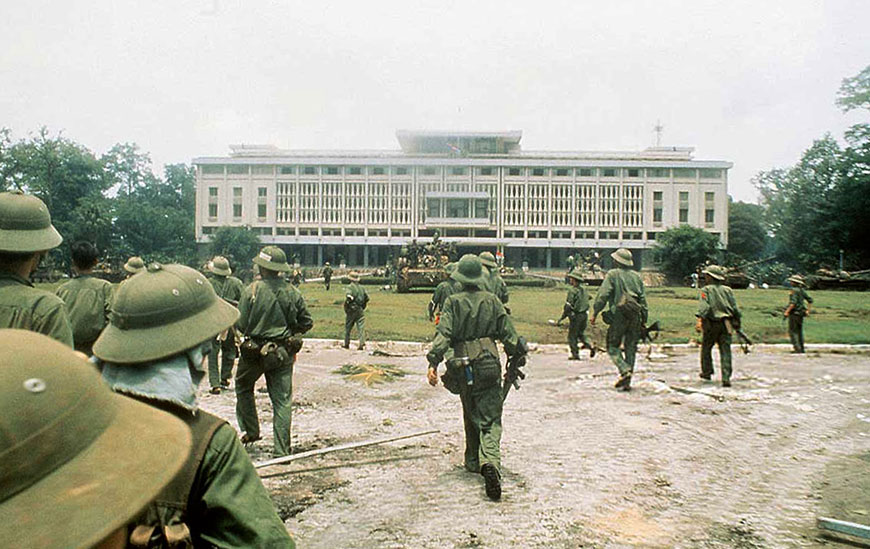
In this April 30, 1975,a North Vietnamese tank rolls through the gate of the Presidential Palace in Saigon | AP Photo
On April 30, 1975, the fall of Saigon marked a decisive turning point in the history of Vietnam, bringing an end to decades of war and paving the way for the country's reunification.
As the 50th anniversary of this historic event approaches on April 30, 2025, let’s explore the journey Vietnam has undertaken, drawing a parallel between the concepts of "Remember - Forgiver - Forever" (the core themes of this commemoration) and the national aspirations of "Independence - Freedom - Happiness." (Độc lập, Tự do, Hạnh phúc, in vietnamese).
Độc lập : Remember - Independence
A major conflict of the 20th century, the Vietnam War was long and bloody, marked by considerable suffering and loss. Following the signing of the Geneva Accords in 1954, Vietnam was divided into two regions, the North and the South, separated by a Demilitarized Zone (DMZ) at the 17th parallel. According to these accords, national general elections were to be held to determine a long-term solution for Vietnam. However, the United States, participating only as observers at the Geneva Conference, neither signed nor ratified the accords. Fearing a communist victory under the leadership of Ho Chi Minh, they chose to support the government of South Vietnam, led by Ngô Đình Diệm, in his refusal to hold these elections.
After France's departure from Indochina, the United States thus took over, supporting the Diệm government in South Vietnam as part of a Cold War strategy aimed at countering communist influence, marking the beginning of a more direct American involvement in the region. This increasing US involvement, driven by the "domino theory" and the fear of the expansion of communism, intensified the conflict. It is worth briefly recalling that the domino theory, popularized in 1954 by President Dwight D. Eisenhower, postulated that the fall of a non-communist country to communism would trigger, like a domino effect, the progressive fall of neighboring countries into the same ideological camp.
This US policy contributed to widening the divide between North and South Vietnam, while paving the way for an American military escalation in the years that followed, culminating in what the world called the Vietnam War. Tragic events, such as the Gulf of Tonkin incident and the Tet Offensive in 1968, marked significant milestones in this war. At the end of the year 1968, Nixon was elected on a platform of disengagement.

Iconic picture of the Vietnamese war | Photo : Horst Faas-AP
Over time, faced with the escalation of the conflict and growing domestic opposition, the United States began a gradual withdrawal process from 1969 onwards, under the presidency of Richard Nixon. His strategy, known as "Vietnamization," aimed to strengthen the South Vietnamese army to enable it to take charge of the fighting, while reducing American involvement. However, this policy was perceived by many as a way to prolong the war and maintain American influence in the region. In fact, in a declassified recording in 2001, President Lyndon B. Johnson acknowledged that the attack by the North Vietnamese forces against American ships during the Gulf of Tonkin incident on August 4, 1964, never occurred. The Gulf of Tonkin incident is therefore a case where a real military event (the August 2 attack) was followed by a staged or fabricated event (the August 4 attack) used to legitimize a major military intervention.
It is crucial to remember that this "war against the Americans" is part of a longer history of struggles for independence. Just as we speak of the "war against the French" rather than the "Indochina wars," the terminology used reflects the Vietnamese perception of a continuous resistance against foreign powers. Indeed, the end of this conflict in 1975 can be seen as a culmination of centuries of conflict in the region, which pitted Vietnam not only against French colonists but also against the yoke of feudal China.
The Hanoi government estimates that during the 21 years of fighting, more than 4 million civilians across the country were killed and 1.1 million soldiers died in combat. On the American side, it was recorded that between 200,000 and 250,000 South Vietnamese soldiers were killed and 58,200 American soldiers were killed or went missing in action. The fall of Saigon on April 30, 1975, following the Ho Chi Minh Campaign, was the culmination of the struggle for Vietnam's independence, an objective dearly won at the cost of these millions of lives. This victory allowed Vietnam to reunify and chart its own course.

Viet Cong soldier | Internet
Tự do : Forgive - Freedom
After the war, Vietnam faced the immense task of healing the wounds of the past and building a new future. This required a process of healing, resilience, and reconciliation, involving efforts to find and identify the missing, assist war victims (veterans, civilians, etc.), and foster national unity.
At the same time, Vietnam gradually expanded its horizons, opening up to the international scene and developing its freedoms. Economic reforms have enabled the country to experience rapid growth, improving the living standards of millions of people. Vietnam has progressively become a leading destination, attracting millions of tourists each year.
However, the path to freedom is not without challenges. The country, known as the "Land of the Two Deltas," continues to navigate between preserving its cultural identity and integrating into a globalized world, seeking to balance economic progress with human rights and individual liberties.

The fall of Saigon - April 30, 1975 | Internet
Hạnh phúc : Forever - Happiness
Today, Vietnam is a dynamic and developing country, playing an increasingly important role in Southeast Asia. Its rich culture, historical heritage, and natural beauty attract visitors from around the world. The current generations of Vietnamese citizens strive to overcome the harsh past of war, to promote the image of a Vietnam that endeavors to develop with resilience, and to showcase the unique beauty and cultural heritage of the "Land of the Dragon" to countries worldwide.
The aspiration for happiness and well-being is central to Vietnam's concerns for the future. The country invests in education, health, and sustainable development to provide better opportunities for future generations.
In commemorating the fall of Saigon, Vietnam remembers its past, celebrates its independence, and looks towards the future with hope. The concepts of "Remember - Forgiver - Forever" resonate with the national motto of "Independence - Freedom - Happiness," guiding the country in its pursuit of a strong, prosperous, and happy nation.
Vietnam April 30, 2025 : From remembrance to the future!